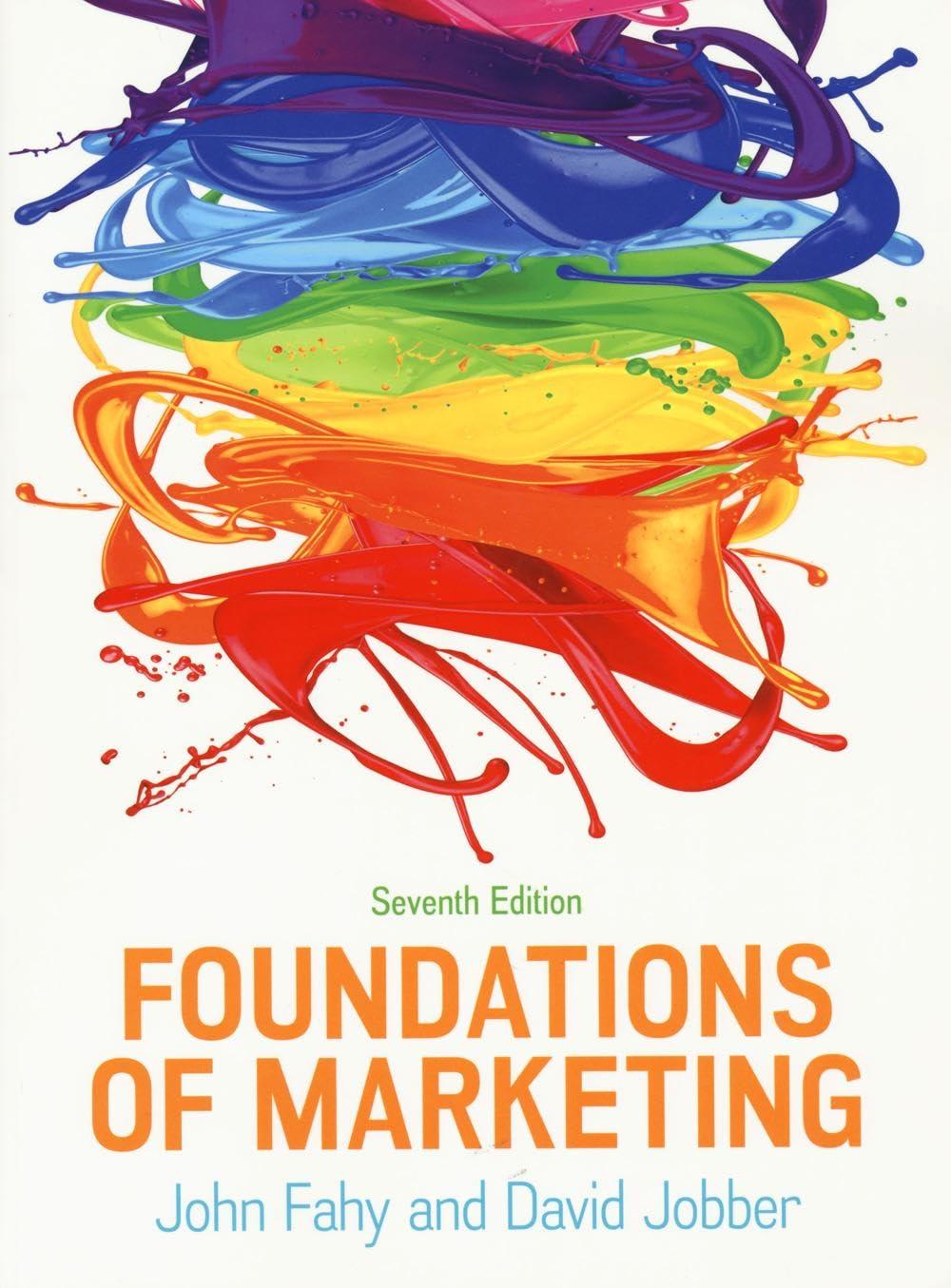In todays interconnected digital world, full of savvy Gen Y consumers, every single thing you do is
Question:
In today’s interconnected digital world, full of savvy Gen Y consumers, every single thing you do is marketing,’ wrote BrewDog co-founder, James Watt. Today, BrewDog is famous for selling a wide range of distinctively tasty and unusually named beers and stouts through its cool, minimalistic urban bars, and in garishly coloured cans through major supermarkets.
Watt and schoolfriend Martin Dickie began brewing beer as 22 year olds in 2005. Two years later, they founded BrewDog, which makes a wide variety of craft beers, and rejects the bland, gassy, commoditized drinks often produced by multinational brewing conglomerates in favour of quirky, distinctive, inventive and ‘authentic’ beers, using outlandish marketing and a seemingly ‘anti-corporate’ business model to engage its audiences.
While critics of the brand accuse it of pretentious hipsterism, shock tactics and over-promotion, it commands a hugely loyal band of consumers who consider themselves fans. To fund its rapid expansion, BrewDog regularly sells shares to its fans – ‘Equity for Punks’. BrewDog really can claim that its customers are invested in the brand’s success.
The Campaign for Real Ale (CAMRA, founded in England in 1971) seeks to encourage the brewing of ‘quality’ ales, which differ substantially from those of multinational conglomerates. Championing quality beers, pubs and bars, CAMRA defines ‘real ale’ as beer brewed using water, hops, barley and yeast, free from added carbon dioxide, and literally ‘living’ or fermenting continuously in the cask (container), bottle or can from which it is served. The UK’s thriving ‘real ale’ industry accounts for more than 11,000 different drinks and around 8 per cent of the beer market but, despite significant efforts to change the demographic, a disproportionately large number of enthusiasts are male, middle-aged and middle-class. Even among the Baby Boomer and Generation X segments, which form its natural demographic hinterland, ‘real ale buffs’ (i.e. consumers and enthusiasts of real ale) are often considered unfashionable. The USA also experienced a reaction against bland, commoditized corporate beer offerings, with a flourishing craft beer industry. Craft beer differs from real ale insofar as the qualifying criteria are less stringent. Most craft beers use powerful, bitter-tasting hops from the west coast of America and are served cold. BrewDog contends that the term ‘real ale’ is meaningless and anachronistic, considering itself a maker of craft beers, but it helps smaller craft beer and real ale breweries to establish themselves, distribute their products and challenge the corporates. It enjoys experimenting, often making small, one-off batches of unusually flavoured concoctions – its grapefruit-infused Elvis Juice and the extra-strong Cocoa Psycho Russian Imperial Stout proving surprisingly popular.
Questions
1. What would be the main benefits to BrewDog of its market segmentation strategy?
2. How would you evaluate the success of BrewDog’s approach to segmentation?
3. To date, BrewDog has taken a focused approach to its market targeting. Is this still appropriate, or should it now consider a differentiated marketing strategy?
4. Evaluate BrewDog’s positioning strategy.
Step by Step Answer:






